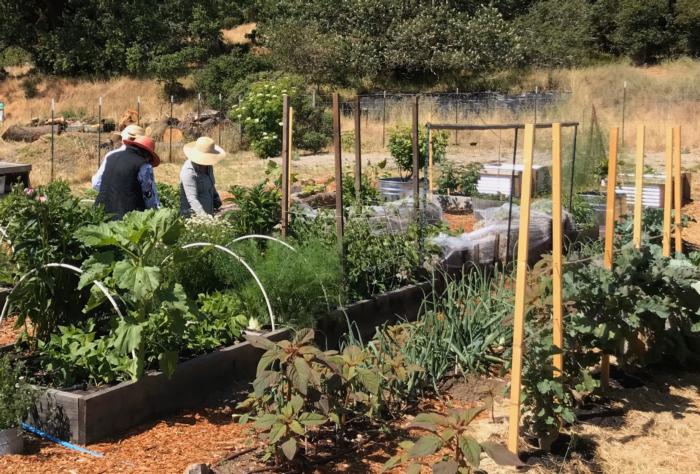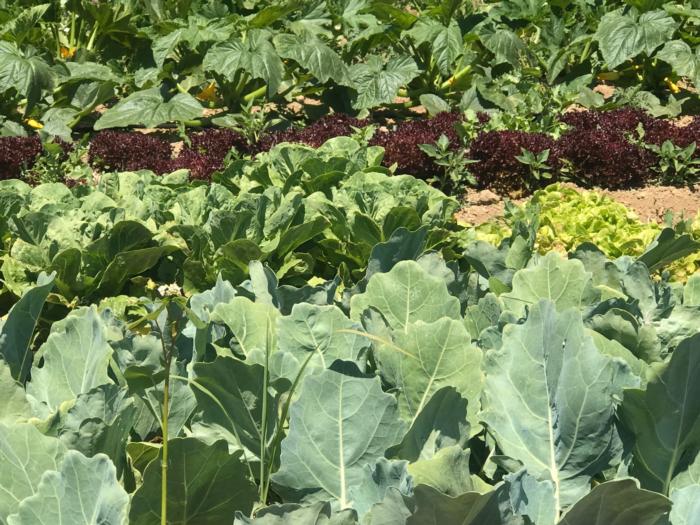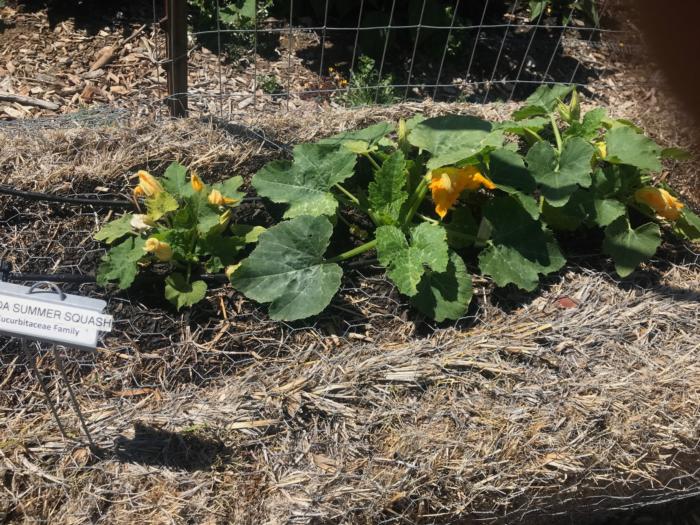News from the Edible Demo Garden
February 2024: Rotating Crops
While the rains limited some of the garden work during January, it was the perfect time to assess the condition of the garden beds and plan for the spring and summer crops. Some of the beds are dedicated to perennials such as blueberries, raspberries, and rhubarb. Others have typically been used to grow herbs and spices like mint, tarragon, and horseradish. However, most of the beds are reserved for annuals and that’s where the planning comes in.
In addition to deciding what to plant and securing the seeds, it’s important to determine the best location for the plants. The main considerations are light, water, and soil. All the existing beds receive plenty of sunshine and have access to irrigation. Soil condition then becomes key in deciding where crops should be planted. A goal in using soil more effectively is to rotate
crops and avoid planting the same crop in the same place season after season.
Why is rotating crops important?
Rotating crops can help retain soil fertility and prevent the buildup of soil borne diseases and pests. Plants differ in micronutrient needs and susceptibility to soil pathogens. The problems that affect plants from one family, may not be an issue for plants from another family. Moving a particular crop, such as cucumbers, to a different planting location each season, can reduce the possibility of infection by diseases that target members of the cucurbit family.
Categories for crop rotation
There are different ways to divide crops into groups for crop rotation. One way is to split crops into categories based on the part harvested. Leafy crops, for example, would be planted together and moved to a new location each season followed by fruit crops, root crops, and legumes. Another method is to group crops as heavy or light feeders according to their nutrient needs. Moving heavy feeders to beds previously occupied by light feeders can make better use of soil nutrients. The most common grouping for crop rotation is according to botanical plant family. Tomatoes, eggplant, peppers, and potatoes are members of the Solanaceae family. Solanaceous crops share the same pests and are susceptible to some serious soil borne viruses.
Preferably tomatoes should not be planted in the same place more than once every four years allowing time for soil diseases to die out. Other plant families to be planted and moved together are the cucurbits (squash and cucumber), alliums (onions, leeks, and garlic), brassicas (broccoli, cauliflower, and cabbage) and legumes (peas and beans).
Difficulties in rotating crops
The ideal rotation plan would involve a three- or four-year cycle. This can work well in a garden large enough to be divided into quadrants. When space is restricted, the cycle may need to be shortened and the number of plant groups reduced. At the very least, home gardeners with limited space should avoid planting the same crop or crops from the same family year after year in the same part of the garden.
In the Edible Demo Garden, straw bales and grow bags are used to increase the available planting space. Because the straw bales are replaced each year and new soil is added to the grow bags, there is no need to rotate the crops planted in these spaces. The straw bales work well for the cucurbit family plants and this frees up garden space for plants from other families. The plans this year are to use the grow bags for tomatoes.
Want to visit the Edible Demo Garden? You’ll find volunteers on site most Tuesday and Friday mornings from 9-11 am. The garden is located within the Indian Valley Organic Farm and Garden on the College of Marin campus in Novato.
Click on this link for more tips about crop rotation.

Year around gardening in the Edible Demo Garden includes planning for crop rotation

Leafy greens can grow together and rotate as a group

Straw bales serve as new beds for squash plants in the Edible Demo Garden
